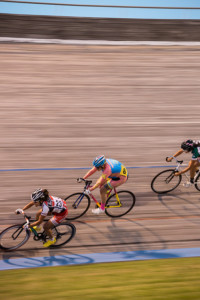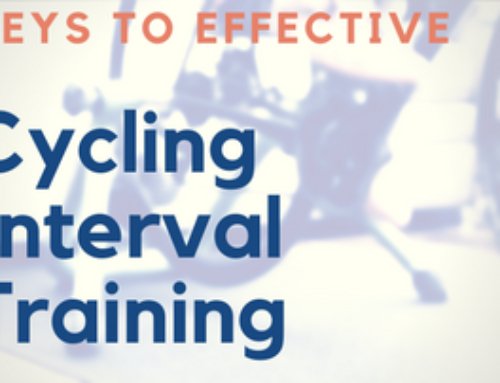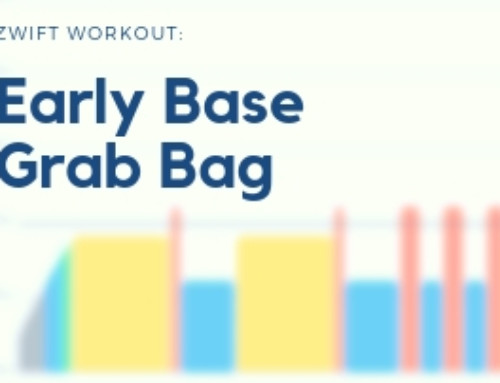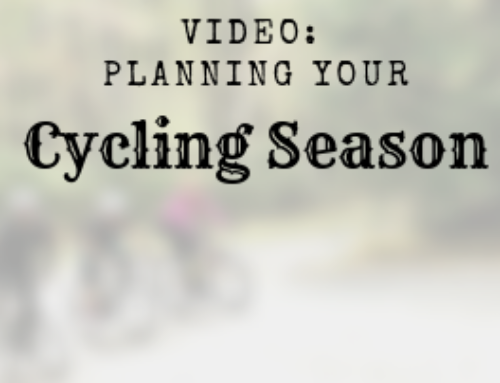I've long been a proponent of tuning your pedal stroke and increasing efficiency to squeeze the most out of your training. By increasing your efficiency, you increase the amount of power that goes to the pedals. That increased power translates into more speed and less fatigue.
But how do you go about improving your pedal stroke? What workouts will help you build an efficient pedal stroke?
Click through the jump to listen to this episode of the Tailwind Coaching Podcast. I'll explain the importance of pedal stroke work and how efficiency makes your training more potent. Don't forget to like and share with your friends, and don't forget to rate the podcast on iTunes! If you want to support the show, consider doing some of your shopping through my affiliate program: remember, it costs you nothing and helps support the podcast.
Podcast: Play in new window | Download (Duration: 45:35 — 34.0MB)
Efficiency improves your training outcomes
I've talked about efficiency and how it improves your training outcomes in the past. I encourage you to pause and read that post in its entirety. But to recap, human beings are only about 20% efficient while riding a bike. That means if you see 100 watts on your power meter, your body is producing around 500 watts of energy. The remainder is lost as heat or used by other body systems.
It seems that raising your efficiency can lead to huge dividends. Even a couple of percentage points can mean the difference between success and failure in a competitive situation. So raising your efficiency should be a primary goal of your base and build training.
To improve that efficiency, you can do a couple things:
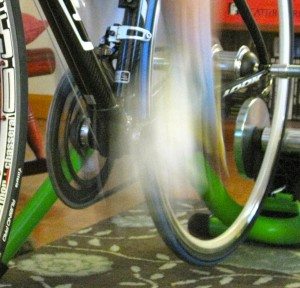 Smooth your pedal stroke
Smooth your pedal stroke
By smoothing out your pedal stroke, you lose less energy to heat or inefficient muscle contractions (which we'll talk about below.) To smooth out your pedal stroke, focus on your backstroke and driving your knee forward.
By “sliding” your foot across the bottom of your pedal stroke you engage the hamstrings and hip flexors. Those muscles help get your “backstroke foot” out of the way of your downstroke on the other side. This creates less resistance on your downstroke.
Driving the knee forward engages foot dorsiflexors and hip flexors. The forward driving motion puts momentum over the top of your pedal stroke and increased to downstroke force. Don't confuse this with “pulling up” on the pedals. Pulling up can make your pedal stroke choppy and inefficient. Driving the knee forward eliminates that choppiness.
Relax your upper body
The more muscles you engage, the more blood your heart has to pump and the more oxygen you use. That means less oxygen for your legs and a ton of lost efficiency.
Relaxing your upper body can increase your efficiency by a couple of percentage points. Doing a self-check during an interval can give you more body awareness. Once in a while, shrug your shoulders and then let them drop. Take a deep breath and exhale forcefully to clear all the CO2 out of your lungs. Drop your elbows and loosen your grip on the handlebars.
All these things help your upper body relax and takes some stress off your cardiovascular system. But how can you take the stress off your neuromuscular system and become more efficient overall?
Let's talk about the physiology of your muscles and how they contract to figure it out.
Neuromuscular physiology and the cycling pedal stroke
To understand how the pedal stroke muscles work, you need to understand the process of how muscles contract.
When we want to contract a muscle, we send a signal from our brain through our nerves. Those nerves don't directly innervate the whole muscle though. They branch out as they reach the muscle and each small nerve cell innervates a small number of muscle fascicles. These fascicles are small bundles of muscle fibers that contract together. That contraction of a fascicle is called a “twitch.”
Whole muscle contractions are just coordinated twitches from different bundles of fascicles. The problem with those twitches is they are rarely perfectly coordinated. That means the milliseconds of difference between the twitches creates a bit of lost efficiency.
By training the neuromuscular coordination between the brain, nerves, and muscles, you can decrease the amount of wasted energy during each pedal stroke.
How pedal stroke work improves coordination and efficiency
By pushing your body out of its comfort zone, you can force it to adapt and change. By constantly challenging your muscle fibers to contract together and produce power, they get better at it. There is less variation in the coordination of muscle twitches. When muscle fiber twitches are highly coordinated, the force of the contraction is significantly greater and more power is put into the pedals.
To force these changes, you want to push your body beyond what it is already capable of. There are a couple ways to do this:
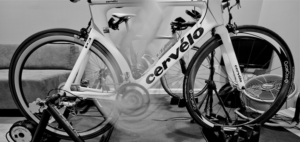 Superspins
Superspins
If you're a “one-speed rider” and you find you can't vary your cadence much, these will be a challenge. The goal of a superspin workout is drive your cadence up as high as you can get it and hold it there. Start in a super easy gear and begin turning the legs as fast as you can while holding good form. Aim to hold for at least 30 seconds, working up to a minute as you get better at it. An ideal target for superspin workouts is around 130 RPM. A typical block of superspin work would be around 5-7 reps of 30 seconds to a minute each.
By repeating this workout several times a week, your body begins to train your pedal stroke muscles to work together to move your legs quickly and smoothly. You'll probably notice that you're really choppy as you start out and as you train more, that pedal stroke becomes smooth as butter.
Single Leg Drills
Single leg drills are an easy and effective way to build neuromuscular conditioning and proper pedal stroke dynamics. Older training theory suggested that by working on single leg drills, you can increase the amount of “pulling” on the pedal and increase your power output. Newer pedal stroke analysis has shown this to be false. Usually, when pedaling with both legs, one leg is pushing and the other leg is just “getting in the way.” Single leg drills will train your body to activate hip flexors and ankle dorsiflexors more efficiently, helping the “dead” leg to get out of the way of the pushing leg.
Basically, if you can smooth out your pedal stroke such that your body can effectively unload the pedals on the upstroke, you will lose less power from the downstroke on the opposite leg. The unloading process ultimately results in increased efficiency and better power transfer.
Single leg drills are simple to execute. I'd recommend performing them on a trainer, but if you've got some quiet, flat stretches of road you can do them outdoors as well. Get in a gear that is relatively easy to push but not so easy that you have to spin fast to keep up with the pedals. Unclip one leg and let it dangle behind the crankset while you continue to pedal with the clipped in leg. Focus on keeping a smooth, consistent cadence with as few dead spots as possible.
Spinup Drills
Spinups are a simple variation of the superspin drills I talked about earlier. In these drills, you're training your body to ramp up a cadence from a slow speed to a fast one. Track racers do this all the time and this drill is an evolution of the track start. By building coordination in this way, your body will easily be able to change speeds by simply adding or subtracting cadence from the equation.
For example, if the group you're in begins to surge a little bit, you have two choices: shift to a harder gear or increase your leg speed. Shifting is inefficient, costing you time to shift and time to settle into the new gear and cadence. If you're able to increase your cadence 5 to 10 RPM and stay with the group, you saved yourself the split second it takes to shift and you're already set into that new cadence.
Performing these are super easy, too. Find a gear to pedal 90 rpm that feels relatively easy. Drop down to 70 RPM and hold it for 5 to 10 seconds. Your goal is to increase your cadence by 10 RPM every 5 or 10 seconds until you can't hold the leg speed anymore. Usually, you'll end up with an interval around a minute long.
Repeat this interval 3-5 times per session with a couple of sessions per week in the base phase. Before you know it, you'll be able to change cadence on demand and change speed just the same.
Singlespeed Drills
Singlespeed drills are a fantastic way to train your body to be more efficient and train a proper pedal stroke. In these workouts, you'll find a stretch of road you can ride at your sweetspot cadence and a specific power number. A stretch of undulating road with some ups, some downs, and some flats, without big climbs or descents, is perfect for this workout. I love combining this workout with some sweetspot interval training to get double the return on investment. Once you've found the gear that puts you at sweetspot cadence and your specified power, take off down the road. Try to keep your power as even as possible throughout the interval and let your cadence vary with the terrain. Don't shift out of the gear you started in unless you simply can't do the interval.
These intervals are great for teaching you cadence control and how to vary your effort with the terrain. It also teaches you that you don't always need to shift in order to change how your body performs and cadence is a powerful tool in your arsenal.
By relying on changing your cadence instead of shifting gears, you can easily raise your efficiency a couple percentage points. And considering how poorly efficient the human body is each and every single percentage point counts.
What's the best time to train your pedal stroke muscles?
There's never a bad time to work on building a proper cycling pedal stroke. You'll always benefit from additional efficiency. The base training phase offers you the best opportunity to enhance your pedal stroke technique. Because there's a higher proportion of endurance training during the base phase, you have lots of time to build neuromuscular coordination and raise your efficiency. Once you hit the build phase and start doing higher intensity interval work, the increased pedal stroke performance will translate into more efficiency interval work.
You can still work on pedal stroke dynamics during every other phase of training as well. For example, during high-intensity climbing drills in the build phase, focus on maintaining that smooth, equal pedal stroke throughout the crank rotation. You can practice a silky smooth pedal stroke during climbing drills and improve your out of the saddle efficiency too.
Sidenote about sweetspot cadence: Sweetspot cadence is found during your Functional Threshold Power testing. It's essentially the average cadence you pedaled at during the FTP test. It represents the most comfortable, most efficient cadence unique to your body. It's also worth noting that “sweetspot” cadence changes based on terrain. For example, I know my sweetspot cadence while climbing in the saddle is dramatically different than my sweetspot cadence on a flat road. And my sweetspot cadence is different on my track bike compared to my crit bike. So there's really a lot that goes into your sweetspot cadence, and you can work on it in many different ways.
The point remains: wherever you train intensity, there's a great opportunity to train efficiency as well. As mentioned previously, because of how inefficient the human body is, every percentage point counts.
And when every point counts, every opportunity to improve your efficiency should be a priority.

